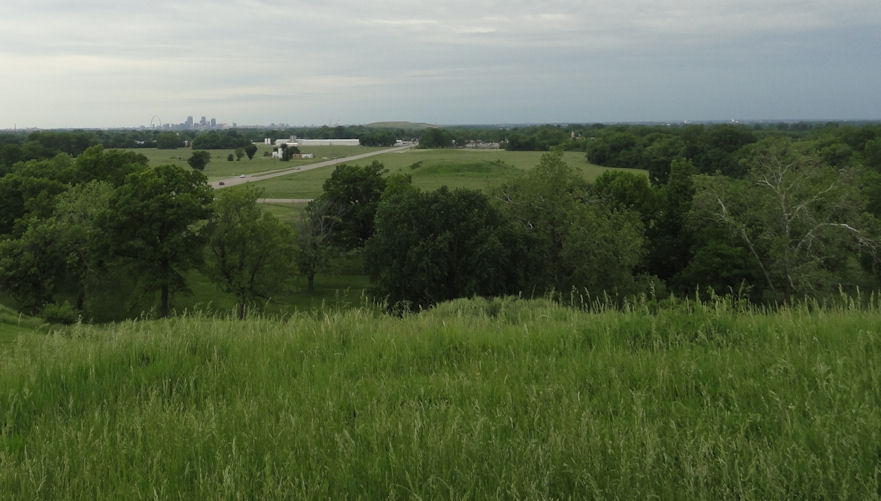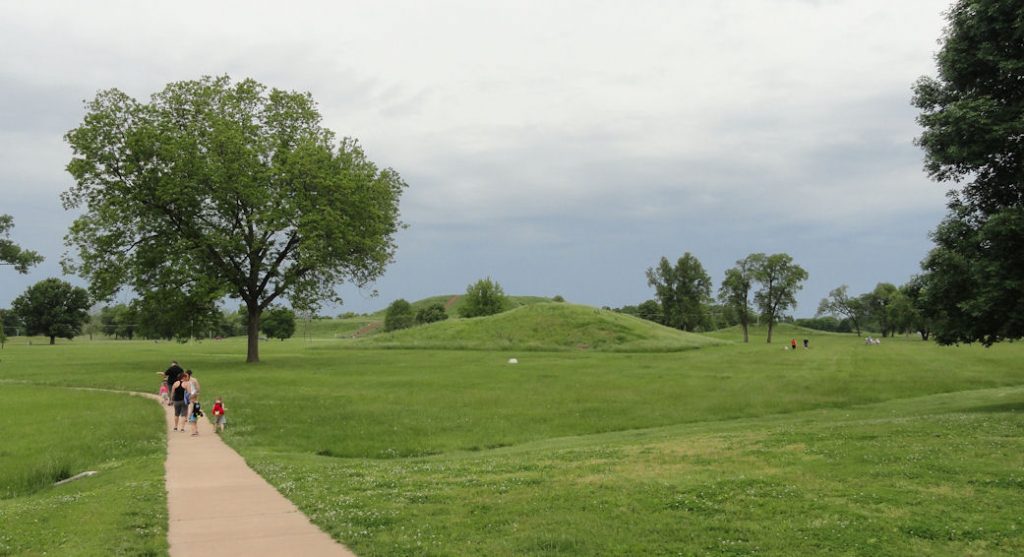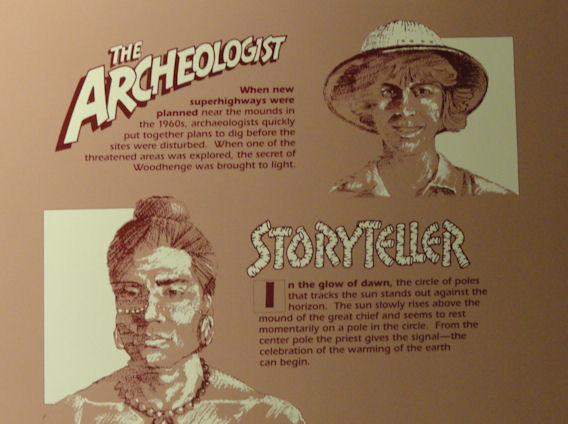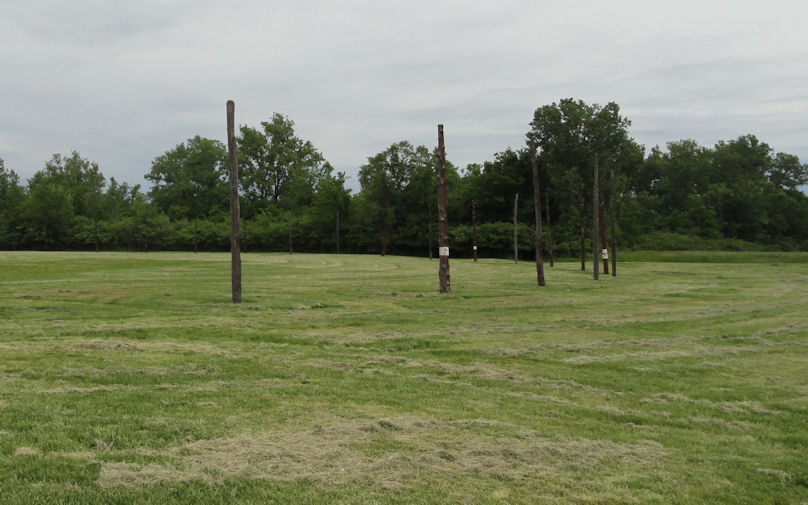Cahokia is the biggest native settlement north of Mexico. The inhabitants built mounds for temples, burials and platforms. Nobody is really sure what they used them for, since the civilization had no discovered writing and it completely disappeared before any European exporters showed up to write anything down for them.Cahokia was the biggest of the mound building societies. Since mostly they lived in the Mississippi drainage basin, we call them Mississippian culture.

Archeology indicates that 10-20,000 people lived at Cahokia during the height, around 900 years ago. That was a big deal for the time and available technology. The concentration was made possible by the rich river soils that allowed surplus of corn. It seems to have been a highly structured society with rigid castes.
Nobody can be sure why the civilization disappeared. The leading candidate is ecological degradation. Cahokians probably just outran their resource base, exhausted their soils and killed off local game. We also don’t know where the people went. Since their civilization collapsed before the introduction of the horse to the plains, they could not have suffered the fate of so many other farming tribes, i.e. being wiped out by plains Indians mounted on horses. The horse changed the balance of power on the plains, allowing previously backward tribes to kick ass. Tribes like to Comanche, Sioux and the Cheyenne more or less wiped out the farming tribes. These genocides were mostly per-historic, in that there are few historic records, but it changed the ethnic mix of middle of America.

The museum was really nice, but I did not particularly like the juxtaposition of the archeologist versus the storyteller, implying an equality of myth and science. Oral history can inform science and real history, but it is always seriously flawed. It cannot be properly evaluated until somebody writes it down and then it stops being oral history. In other words, oral history is a raw material for historical analysis. It is even worse in this case, since there is no oral history. The Cahokians are gone. There was no oral history, so all the “wisdom” is conjecture.

Cahokia is worth seeing if you are in the St. Louis area, although I doubt I would drive very far to see it. I drove out of my way to visit Chillicothe, Ohio a couple years ago. It was similar. Cahokia is a little bigger. I visited Aztalan in Wisconsin too, but that was a long time ago and I don’t recall much.

Above is “Wood henge.” It is the ancient American answer to Stonehenge. Looks a lot like telephone pole henge, but I suppose it was the thought that counted.
My first visit to an Indian mound was Lizard Mound in Wisconsin. I went as a child and I still remember the exhibit with a skeleton. Scared me for days and I still remember it.
